
|
Astronomy Picture Of the Day (APOD)
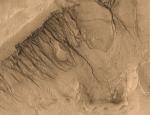 Unusual Gullies and Channels on Mars
Unusual Gullies and Channels on Mars
5.02.2003
What could have formed these unusual channels? Inside Newton Basin on Mars, numerous narrow channels run from the top down to the floor. The above picture covers a region spanning about 1500 meters across.
 Wisps of the Veil Nebula
Wisps of the Veil Nebula
4.02.2003
These wisps of gas are all that remain visible of a Milky Way star. Many thousands of years ago that star exploded in a supernova leaving the Veil Nebula, pictured above. At the time...
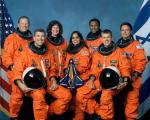 Space Shuttle and Crew Lost During ReEntry
Space Shuttle and Crew Lost During ReEntry
3.02.2003
Saturday morning, the Space Shuttle Columbia broke up during re-entry. Pictured above is the seven-member crew that was lost. True space pioneers, they were, left to right, David M. Brown, Rick D. Husband, Laurel B. Clark, Kalpana Chawla, Michael P. Anderson, William C. McCool, and Ilan Ramon.
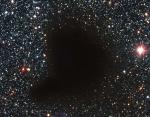 Molecular Cloud Barnard 68
Molecular Cloud Barnard 68
2.02.2003
Where did all the stars go? What used to be considered a hole in the sky is now known to astronomers as a dark molecular cloud. Here, a high concentration of dust and molecular gas absorb practically all the visible light emitted from background stars.
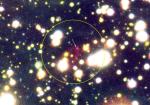 The Nebula And The Neutron Star
The Nebula And The Neutron Star
1.02.2003
The lonely RX J1856.5-3754 was formed from the collapsed core of an exploding star. At a distance of 180 light-years it is the closest known neutron star. More massive than...
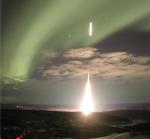 Auroral Rocket Launch
Auroral Rocket Launch
31.01.2003
In this striking image, a rocket climbs skyward toward an expansive green auroral display in the first launch of 2003 from the University of Alaska's Poker Flat Research Range. Recorded on January 27th...
 Comet Kudo-Fujikawa: Days in the Sun
Comet Kudo-Fujikawa: Days in the Sun
30.01.2003
Cruising through the inner Solar System, new Comet Kudo-Fujikawa reached perihelion, its closest approach to the Sun, yesterday, January 29. Passing within 28.4 million kilometers of the Sun, this comet came much closer than innermost planet Mercury basking only 57.9 million kilometers from our parent star.
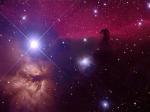 Orions Horsehead Nebula
Orions Horsehead Nebula
29.01.2003
The Horsehead Nebula is one of the most famous nebulae on the sky. It is visible as the dark indentation to the red emission nebula seen above and to the right of center in the above photograph. The bright star on the left is located in the belt of the familiar constellation of Orion.
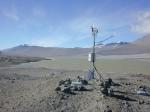 The Lost World of Lake Vida
The Lost World of Lake Vida
28.01.2003
A lake hidden beneath 19 meters of ice has been found near the bottom of the world that might contain an ecosystem completely separate from our own. In a modern version of Sir Arthur...
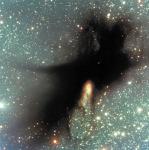 BHR 71: Stars, Clouds, and Jets
BHR 71: Stars, Clouds, and Jets
27.01.2003
What is happening to molecular cloud BHR 71? Quite possible, a binary star system is forming inside. Most stars in our Galaxy are part of binary star systems, but few have ever been seen in formation.
|
January February March April May June July August September October November December |
|||||||||||||||||||||||||||||||||||||||||||||||||